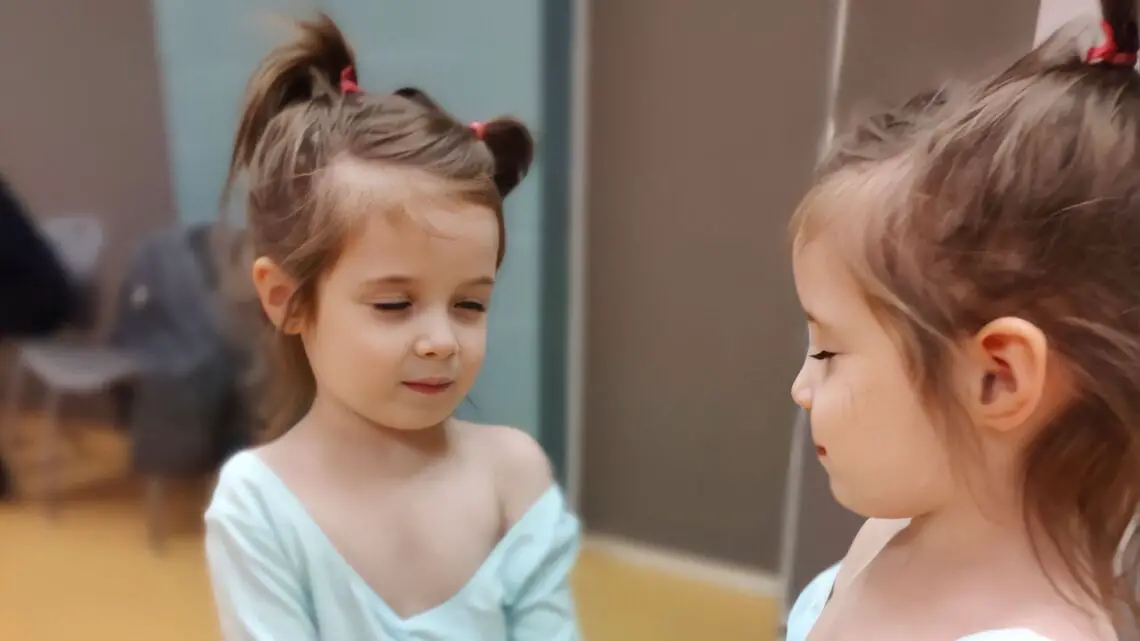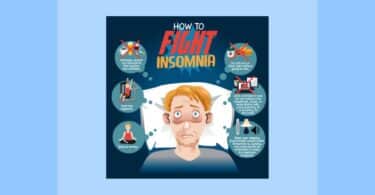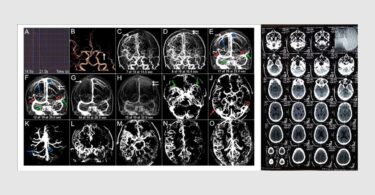This 2.5 year old girl was developing normally until her 22nd month, when her parents noticed a regression in her development. At 18 months of age, she got vaccinated with a hexa-vaccine. When she was 20 months old, she got a cold with a cough and 38,7°C fever. She has not had any fever since then.
Before the regression, she had had normal eye contact and had responded normally when somebody called her with her name. She had always turned and looked towards the speaking person. At her 22nd month of age, she lost her eye contact completely, stopped responding to her name and stopped talking.
Now she has no eye contact (3) and does not respond to her name (3).
She does not speak (3), only makes different noises.
She often does repetitive movements (3).
She does not play with children, only by herself. (3)
She doesn’t quite understand what parents wants from her. (3)
She cannot concentrate. (3).
She sometimes laughs without a reason (probably when she remembers something). (1) When she drinks cow’s milk, she has bursts of laughter at night. (2)
Her sleep has been worse in the past 4 months. She wakes up every night between 4-5 a.m. (3), sometimes falls asleep after one hour, sometimes stays awake until morning.
She often plays with her navel. (2)
According to her mother, she sometimes loses physical balance. (1)
She cannot be examined at the doctor‘s and does not even allow her temperature to be taken. (3) On the other hand, she has a low pain threshold and almost does not respond to any painful stimulus. (2)
When she hears a child crying, she plugs her ears and does so with loud music too.(3) When she sees someone being hurt, she starts crying.(3)
She doesn’t want to eat normal food and eats mainly one type of biscuits. (3) Sometimes she likes to eat fruits – grapes, apples, nectarines and corn.(1) She likes spicy food.(3)
She is a kind and calm child and has no anger tantrums.
She sleeps on her back.(2)
When she was 2 weeks old, she choked from milk and was a bit blue for about one minute.
She is afraid of burning candles. (2)
She likes music and sings a lot (2), but repeats the same song the whole day (3). She also likes travelling. (2)
Acute diseases:
She only gets occasional mild colds without fevers. Her last fever was at the age of 20 months.
Family medical history:
Maternal grandmother: died from lung cancer at the age of 66. Maternal grandfather: died from cancer at the age of 72.
Analysis of the case:
The prognosis:
Pathology in this case is distributed only on the psychological level, which makes the prognosis worse. When the organism is unable to keep the pathology at the physical level at least partially and allows the whole pathology to deeply pervade the psychological level, it means the organism is weak and we consider it a very bad sign in homeopathy.
The child has some typical autistic traits with the pathology on both, mental and emotional level. Cases of autism are generally difficult to treat and chances for improvement are limited as there is significant damage to some areas of the brain. The diagnosis itself makes the prognosis worse. However, in some cases good results can be achieved, especially when the treatment is commenced soon.
Considering the fact that the child had been developing normally on all levels and had had normal eye contact and speech proportionate to her age and then quite a sudden change occurred, there must have been some triggering factor.
The only two possible triggers were the first vaccine or the acute cold at the age of 20 months. The latter is not probable though as there was no aggressive treatment of the cold. The child only got some antipyretics which can be suppressive, but it is not common that this would trigger autism.
The fact, that the girl has not had a fever since the age of 20 months is not favourable for the prognosis and it means that her level of health is low.[1] The overall prognosis is not favourable, but considering that we are starting the treatment relatively soon after the onset of the pathology, there might be some chance of improvement. The prognosis can be determined more precisely after evaluating clearness of the remedy picture and the reaction to the remedy.
Selection of symptoms:
Peculiar symptoms:
- Waking at 4-5 a.m. (3)
- Sympathetic (3) (crying when somebody is hurt, plugging her ears when somebody is crying)
- Fear of burning candles (2)
- Desire for spicy food (3)
- Laughing after milk (2)
- Playing with the navel (2)
Intense symptoms:
- Desire to travel (2)
- Love for music (2)
- Sleep on back (2)
The reader might wonder why I did not include symptoms like lack of eye contact, lack of reaction to her name, arrested speech development and general development, repetitive motions, lack of understanding, bad concentration, playing alone or causeless laughing.
These are typical autistic symptoms and will not lead to the correct remedy because they do not represent the individual response of the organism. Most of autistic children will have them in some variations. On the contrary, the symptoms which are inexplicable by the diagnosis will lead to the remedy, which can have a deep curative effect.
Playing with the navel may be considered as an autistic trait, but it is worth taking into consideration, because we cannot explain why she plays with the navel in particular. Laughing after milk is a very peculiar symptom, but I am not aware of any remedy in our Materia Medica, which covers that. We could only use it as aggravation from milk.
The fact that the child is calm, obedient and not angry could be considered a symptom too, because it is not very common in autistic children. On the other hand, these are healthy characteristics and not a pathology, so I will keep this information aside for now and possibly use it during the differential diagnosis. Fear of burning candles could be interpreted as fear of fire.
Relevant rubrics: (using The Essential Synthesis repertory)[2]
SLEEP – SLEEPLESSNESS – night – midnight – after – 4 h – after
SLEEP – SLEEPLESSNESS – night – midnight – after – 5 h – after
SLEEP – WAKING – night – midnight – after – 4 h
SLEEP – WAKING – night – midnight – after – 5 h
All these four rubrics are worth combining, because they express very similar symptoms and they all cover the type of sleeplessness the patient has.
MIND – SYMPATHETIC
MIND – FEAR – fire
GENERALS – FOOD and DRINKS – spices – desire
GENERALS – FOOD and DRINKS – milk – agg.
MIND – TRAVELLING – desire for
MIND – MUSIC – desire for
SLEEP – POSITION – back; on
I was not able to find the rubric for touching or handling the umbilicus.
Differential diagnosis of the most probable remedies:
Carcinosin: covers very well waking at 4 a.m., sympathy, desire for spices, desire for travelling and love for music. Waking at 4 a.m., sympathy and desire for spices are keynotes of this remedy. Carcinosin can also be found in the rubric for sleeping on back. Aggravation from milk was confirmed by Dr. Foubister.5 Family history of cancer (although not very strong) is in favour of this remedy as well as the fact that the child is unusually nice and obedient.
Stramonium: This remedy is worth mentioning because it covers fear of fire and some typical autistic traits like evading look and repetitive motions and actions. These are, however, not as important as the symptoms which are not explicable by autism and the remedy cannot be confirmed otherwise.
Calcarea phosphorica: This remedy should be considered too because it covers sympathy, desire for travelling and milk intolerance. Milk intolerance is more prominent in Calcarea carbonica which also has waking at 3 a.m. (although the patient has waking between 4-5 a.m.). Desire for spices is a keynote of Phoshorus and Calcarea phosphorica can be considered a compound remedy which includes some symptoms of Calcarea carbonica and Phosphorus.
Causticum is one of the most sympathetic remedies in our Materia Medica (together with Phosphorus and Carcinosin). Causticum is included in the rubrics SLEEP – SLEEPLESSNESS – NIGHT – MIDNIGHT – AFTER – 4 H – AFTER and SLEEP – WAKING – NIGHT – MIDNIGHT – AFTER – 4 H, but it cannot be confirmed otherwise. The same is valid for Phosphorus (which can be found only under waking or sleeplessness at 4 a.m.).
Selection of the remedy:
If we exclude the pathognomonic symptoms of autism listed above, there are not many remedy options in this case. I wanted the remedy to cover the sympathetic element and waking around 4 or 5 a.m. I considered these to be the main symptoms of the case (from a homeopathic point of view) as the first one is really unusual for autistic children and the latter is not explicable by the diagnosis and it is a strong and objective symptom.
The only remedy which has this combination as keynotes is Carcinosin. On top of that, this remedy covers desire for spices, music and travelling. There is also some history of cancer in the family and the child is unusually obedient for an autistic child. Carcinosin children tend to be very obedient and nice. Carcinosin is therefore the closest remedy in the case and the picture is surprisingly clear.
Prescription: Carcinosin 200C once a day until reaction
Note: As there is a deep mental pathology in cases of autism, it is usually better to give the remedy repeatedly for a longer time, but once there is a reaction, one has to decide whether to stop or continue dosing.
If I see a correct reaction to the remedy and a general improvement, but the case keeps relapsing, I sometimes decide to continue dosing without interruption. In most cases, I stop the dosing once I am sure the reaction has established itself.
In cases of very severe autism, it is probably better to continue dosing even when there is a reaction. I chose 200C potency because there is deep mental pathology and no physical pathology which could endanger the patient in case the remedy is not correct. A potency higher than 200C could be potentially dangerous considering the patient’s lower level of health.
Outcome of the treatment:
12 days after beginning of the treatment:
The parents contacted me after 12 days of dosing. The child was generally worse for the first 4 days. She was uneasy and moody and she was making up her own unreal words. The parents also noticed one symptom from the past which the child had not had for the past few months – causeless shaking of hands.
At the same time, they already reported some improvement. The child ate a steak using a fork. She had never eaten a steak, nor used a fork before.
On the 11th day, the girl got a fever above 38°C. They managed to measure 38°C, but then she did not allow them to take the temperature anymore. However, the mother guessed it was higher later on because the child was very hot to touch. She also had a cough and a coryza.
The acute symptoms were the following:
Delirium during the fever, repeating one sentence again and again and singing (3)
No perspiration, dry heat (3)
Hot head and trunk but cold extremities. (3)
Thirstless (3)
Whistling respiration (2)
Cough agg. at night (3) and after eating (2). Vomiting and gagging from cough(2)
Cracked dry lips (3)
Offensive odour from mouth. (2)
First of all, the reoccurrence of a fever (probably high fever) is a very good sign. If the fever was really high (38,5°C or more), we can be certain that the remedy is correct.1 As the fever had lasted for 2 days already and I was suspecting bronchitis, I decided to treat the acute condition.
On top of that, the acute picture was quite clear which was another good reason to prescribe a remedy. The most important symptom was the delirium during fever, so one should primarily think about remedies like Belladonna, Stramonium, Baptisia, Pyrogenium, Hyoscyamus or even Podophyllum, Teucrium marum verum or Lachesis (loquacity during heat).
If we look at the other symptoms like dry heat, hot head with cold extremities and lack of thirst, it is quite clear that the simillimum here is Belladonna. It is also one of the few remedies in the rubric MIND – SINGING – fever, during.
Cough at night can be confirmed from several sources of Materia medica, e.g. Hering’s Guiding symptoms of our Materia medica.[3] Gagging and vomiting from cough can be confirmed in Hering’s and Kent’s Materia medica[4]. It is not so hard to find the confirmation for dry and cracked lips and offensive odour from mouth in Belladonna either.
Stramonium can have hot head and cold extremities; it is one of the main remedies for delirium during fever and covers singing and loquacity during fever. However, it is usually thirsty. The offensive odour and delirium could point to Baptisia or Pyrogenium, but there are no other keynotes to confirm one of these remedies.
Mercurius has an offensive odour from mouth and night aggravation and can be found in the rubric MIND – DELIRIUM – fever – during. Lachesis covers loquacity in general and during fever as well and can have hot head and cold extremities, but cannot be confirmed otherwise.
Prescription: Belladonna 200C single dose (dosing of Carcinosin was stopped)
Reaction to the remedy:
The mother did not notice any significant aggravation after the remedy, but the fever went down over night and never came back. In the morning the cough was also better. Mild cough and coryza persisted for another 3-4 days until they went away.
A follow-up 6 weeks after beginning of the treatment:
The girl has eye contact. Response to her name has improved. Before treatment, she either did not react at all, or had to be called at least 5 times and reacted only to her father. Now she reacts to first, second or third call at the latest and reacts to both parents.
The shaking of hands stopped, but she keeps jumping. Teachers in her kindergarten have reported that she has started doing things she did not do before and understands tasks better. However, she still does things only when she wants to.
She is still very picky regarding food, but she slowly adds some new foodstuff. Today she asked for meat which her mother was eating.
She stopped singing after the remedy but lately she has sung a bit again, however, not as much as before treatment.
Her sleep has improved. She does not wake at 4 a.m. anymore. She still plays alone. There is no improvement in her speech.
She has been sweating for the past 10 days and has cold hands.(2) She mainly sweats on her forehead, neck (both front and back) and on her back.(2) The sweating is stronger at night.(2)
Evaluation of the reaction:
There was a clear initial aggravation and there are already some signs of improvement. Namely the eye contact, reaction to her name, general understanding and sleep. It is favourable that there has been improvement of the autistic traits so soon after beginning of the treatment.
As mentioned earlier, the reoccurrence of the fever, which the child had not had since the setback is a very good sign.
All these factors mentioned above indicate that the reaction is favourable, the remedy was most probably correct and it is necessary to wait.
2 months after beginning the treatment:
The child has a fever 39.5°C. It started suddenly, 2 days ago at night. She has hot head and cold feet (3) and is not perspiring (3). She has thirst for large quantities.(3) The fever is remittent. She is hot to touch and has red cheeks.(3)
At this point, we can be quite sure that the remedy was correct. I advise the reader to study the theory of Levels of health from Prof. George Vithoulkas1 for the explanation of why we can tell that the remedy is correct just from the fact that this particular child is getting sick more often after the remedy.
At this point, it was necessary to decide whether we would treat this acute episode or let the organism overcome it by itself. We do not need to treat every fever the child gets, but when we see a clear picture, giving a remedy is more justified because it may help improve the chronic condition as well.
If the picture is not clear, it is more risky to give a remedy for an acute condition because with an incorrect remedy, we may disturb the good reaction to the original remedy.The current symptoms are somewhat similar to the last acute where we gave Belladonna, but this time, the child has a lot of thirst and there is no delirium (which could mean the organism is already stronger and copes with the fever without the need of producing mental pathology).
With the sudden development of a high fever, hot head and cold feet and thirst, the first remedy which comes to mind, is obviously Aconitum. Although it usually sweats a lot during fever, absence of perspiration is not a contraindication and can be confirmed in the Materia Medica.
Prescription: Aconitum 200C single dose
Reaction to the remedy: After Aconitum, the fever was even higher for about one hour and then started subsiding. Next day the child was completely free from the acute symptoms.
5 months after beginning of the treatment:
The girl has normal eye contact. She has improved in understanding. For example, she has learned to wash her hands, which was unthinkable before. She responds well when she is called by her name. Before treatment, she only reacted in about 10% of cases when being called. Now she reacts in 80-90% of cases.
She still does repetitive movements, maybe even more than before.
She has started playing with other children. She is less in her inner world and interacts more with the outside environment and people.
She sings less often.
Her playing with toys changed a bit more towards normal. She has started pronouncing some words – calling some things by their names. She has started eating more foodstuffs, although in the past two weeks she has been a bit more picky again.
She does not wake at night. Her mother reported an improvement in her balance. Today she waved her mother goodbye when she was going to the kindergarten. It happened for the first time in her life.
She is still sensitive to noise and sometimes cries from noise.(3)
She still sleeps on her back.(2)
In the past two weeks, she has become defiant and obstinate.(3)
Evaluation of the reaction:
It is clear from the reaction that the child has improved quite significantly. The most important thing is that the autistic traits are improving – the eye contact, response to her name, interaction with other people, speech and general understanding.
It is interesting that the child starts being obstinate. For somebody who does not look at the human organism as a whole, it may be perceived as an adverse effect. However, from a homeopathic point of view, it is actually an improvement, because deep mental problems are getting better and the organism is trying to push the pathology more towards the emotional level, which is hierarchically lower than the mental level. The child is actually behaving more like a normal child, which is a very good sign. The occurrence of another acute disease and another fever is very favourable and confirms that the remedy was correct. The reaction is favourable and it is necessary to wait.
10 months after beginning of the treatment:
4 months ago, the girl got antibiotics despite my disapproval. She reportedly had some streptococcal infection with a fever. The mother decided to follow the advice of medical doctors and gave her antibiotics.
In spite of having taken the antibiotics, the child has kept improving in general. She had another acute disease 2 weeks ago with a fever and a coryza which was not treated and went away in 3 days on its own.
The mother reports that every time the girl has a high fever, her mental condition temporarily improves. Her speech has improved. For the past 2 months she has been saying words on her own accord. She started doing it spontaneously.
One month ago, she kissed her mother for the first time ever.
She understands jokes and laughs at them. She understands what others want from her and learns new things all the time. She eats a lot of things. She craves milk (3) and ice cream (2). Playing with toys is more normal, but still not completely normal.
She is still quite obstinate and does not like her younger sister. She gets angry when she does not get what she wants. (2) During anger she mainly shrieks (3). She occasionally strikes people. (2)
She still sleeps on her back (2).
She sings only occasionally and does not repeat the same song all the time anymore. She stopped doing repetitive movements.
Evaluation of the reaction:
It is a question whether the antibiotics have impaired the development of the case and whether the improvement would have been better without them, but in any case, the child continues to improve further.
There are certain signs showing that the autistic traits are slowly going away. For example, understanding jokes or kissing the mother are clear signs of improvement. One could be disappointed with the speed of improvement (e.g. the speech), but we should keep in mind that autism cases are not easy to treat, and many of these cases are incurable and it takes time for the organism to repair the substantial damage of the brain.
The improvement in this case is very good considering the child’s diagnosis. The anger is completely fine as long as autistic traits are subsiding. In this particular case it means that the organism is shifting the pathology to a more superficial level.
Discussion: Homeopathy can be effective in cases of autism, especially the milder cases or cases with recent onset of the pathology. In many cases, there will only be partial improvement, which, however, can still improve quality of life of the person and the family significantly. Unfortunately, many of serious autism cases are incurable.
[1] VITHOULKAS, G., WOENSEL, E. The Levels of Health: The Second Volume of The Science of Homeopathy. Athens, Greece: International Academy of Classical Homeopathy, Center of Homeopathic Medicine, S.A., 2010. ISBN: 978-9-6087-4294-9
2 SCHROYENS, F. The Essential Synthesis 9.2E. London: Homeopathic Book Publishers, 2007. ISBN: 978-0-9557151-0-5
3 HERING, C. Guiding Symptoms of Our Materia Medica. Belladonna [online]. http://hpathy.com/e-books/guiding-symptoms-of-our-materia-medica/belladonna-5/
4 KENT, J.T. Lectures on homoeopathic materia medica. New Delhi: B. Jain Publishers, 2011. ISBN 978-81-319-0259-2





Thank you so much for a well outlined great case! I appreciate the learning very much.
Found the diagnosis and remedial action taken extremely interesting,since I work with Specially abled children. The article helped me understand much more than I know.Thanks
Superb case and very well managed…. treating one autistic child right now and this case going to help me for sure…thanks a lot for sharing
Dear Petr,
Very nice case with helpful discussion on the applicability of Vithoulkas Levels of Health. You dosed her with Carc 200C daily initially and decided to wait at the 6 week point due to signs of improvement. You never had to redose her with Carc? Thank you for presenting this case.
Great case. Thank you for sharing all this wisdom